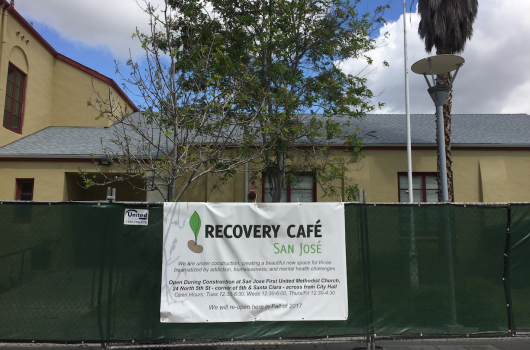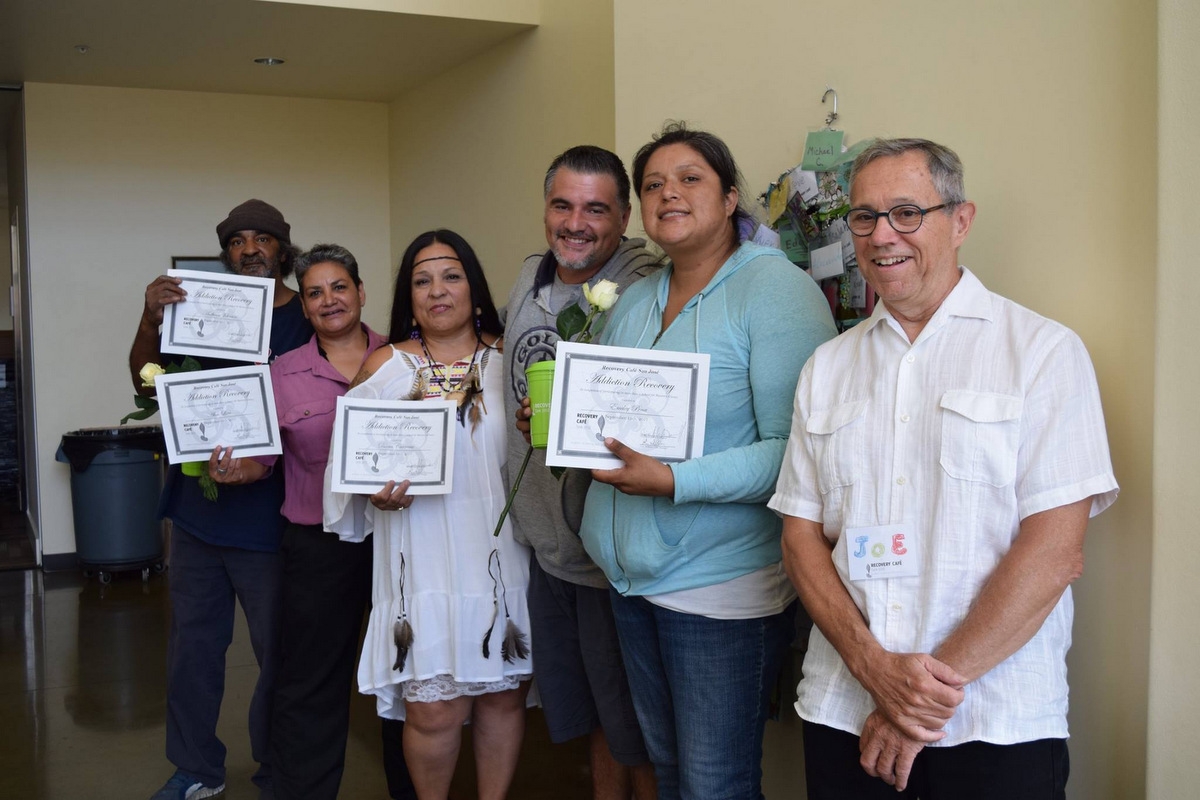To Incubate, Small is Good

How big does a church need to be to start a non-profit? That may be the wrong question. It might be better to ask, “How small?”
In 2011 our congregation, First Christian Church of San Jose, was about 25-30 people. A few of us were homeless. We had a solid 1938 building with good bones, despite the fact that we often had to put much of the offering money into fixing it. We were hanging on because it meant a lot to us that our building was being used to serve the community. There was a small emergency shelter for homeless families in the old education wing, and groups came in to serve seven different meals a week in our Social Hall. If the Disciples Yearbook and Directory were counting the number of people sheltered and fed, our numbers were awesome!
In spite of all our hard work and dedication, hardly any people were getting housed. Many we served were sick, and sometimes, literally dying on our steps. It was heartbreaking.
In 2011, FCC Board members Jim and Sandy and I made something of a pilgrimage to Seattle to visit a place called Recovery Cafe. All three of us had heard that a minister and social innovator, Killian Noe, had started it out of New Creation Community. We arrived before Sunday evening worship and heard the story of how Recovery Cafe came to be. The seed was planted when three of them met weekly for prayer at 6 a.m., discerning the direction and mission their community would take.
Once they launched their vision of Recovery Cafe, they had a lot of trouble finding the right space for it. They laughed as they told us this part, because we were now all sitting in the beautiful building that they had finally found, bought, and renovated after six years of renting in various places.
While their church had no building of their own, what they had looked for was a building for their mission. New Creation Community was meeting in Recovery Cafe. So often it is the other way around. As we talked, people began trickling in for worship, and eventually there were about 12 people.
The next day we visited the Recovery Cafe program. It was bustling 5 days a week now with lunch and dinner, classes, and recovery circles, with Cafe members involved in taking care of the place. When we left Seattle and headed back to San Jose, we were in awe, not only of the impact, but of the radical hospitality and quality of programs. People came together to get well. They called each other for support, encouraged new people to come to class, showed off their art, went walking together, ate healthy meals with friends, celebrated recovery milestones.
On the plane on the way home, Sandy and Jim said, “Wow, we’re in good shape! We have more people and a building!” We laughed.
Not long after we were there, Recovery Cafe maxed out its membership at 350. These days there’s often a waiting list to join.
Our friends in Seattle taught us their model, and for more than three years we have been
welcoming people to Recovery Cafe San Jose. What we do now is so different than what we used to do. We still have meals and housing, but it’s all around creating a path to healing and wellness. We didn’t need to figure it out ourselves. I don’t think we could have. Why wouldn’t we learn from others who had already done all the hard work of developing something that was now working well?
One thing we had in common that made all the difference was that we started from really small churches. Churches with nothing to lose, willing to learn and respond to a specific call, work hard, and give what they have for the benefit of the larger community. It might work for a bigger church, but it will probably be harder to do!
Addendum
For years, our congregation had been inspired by the vision and work of the Church of the Saviour (CoS) in Washington, DC. We’d read their books and quoted them often in our services. The CoS is a network of small, ecumenical Christian faith communities. The communities are the result of an alternative approach to “church” and church structures. Out of the desire for greater intimacy and loving accountability for authentic spirituality, their vision was to stay small. Each community would listen profoundly for a call to their healing work in the world. What resulted was a cluster of small churches birthing non-profits of remarkable scale. The Adams Morgan neighborhood in Washington, D.C., has over 40 “ministries”—affordable housing units and non-profits—started by these congregations. Killian Noe learned this way of being church in Washington, D.C., where she co-founded Samaritan Inns, a residential recovery facility birthed from a CoS community. When she moved to Seattle, she took this way of being church with her.
The Church of the Saviour story is beautifully chronicled in the books written by Elizabeth O’Connor – Call to Commitment and Journey Inward, Journey Outward.
Printer-friendly version here! >>
The NBA incubates new ministries, supporting social entrepreneurs of faith who are
serving their communities in a variety of innovative ways and empowering these
Disciples-led health and social service projects to focus on growth, impact, and
sustainability. Learn more at nbacares.org/incubate or by contacting Rev. Ayanna
Johnson Watkins, Director of the NBA Incubate Initiative, at awatkins@nbacares.org.
